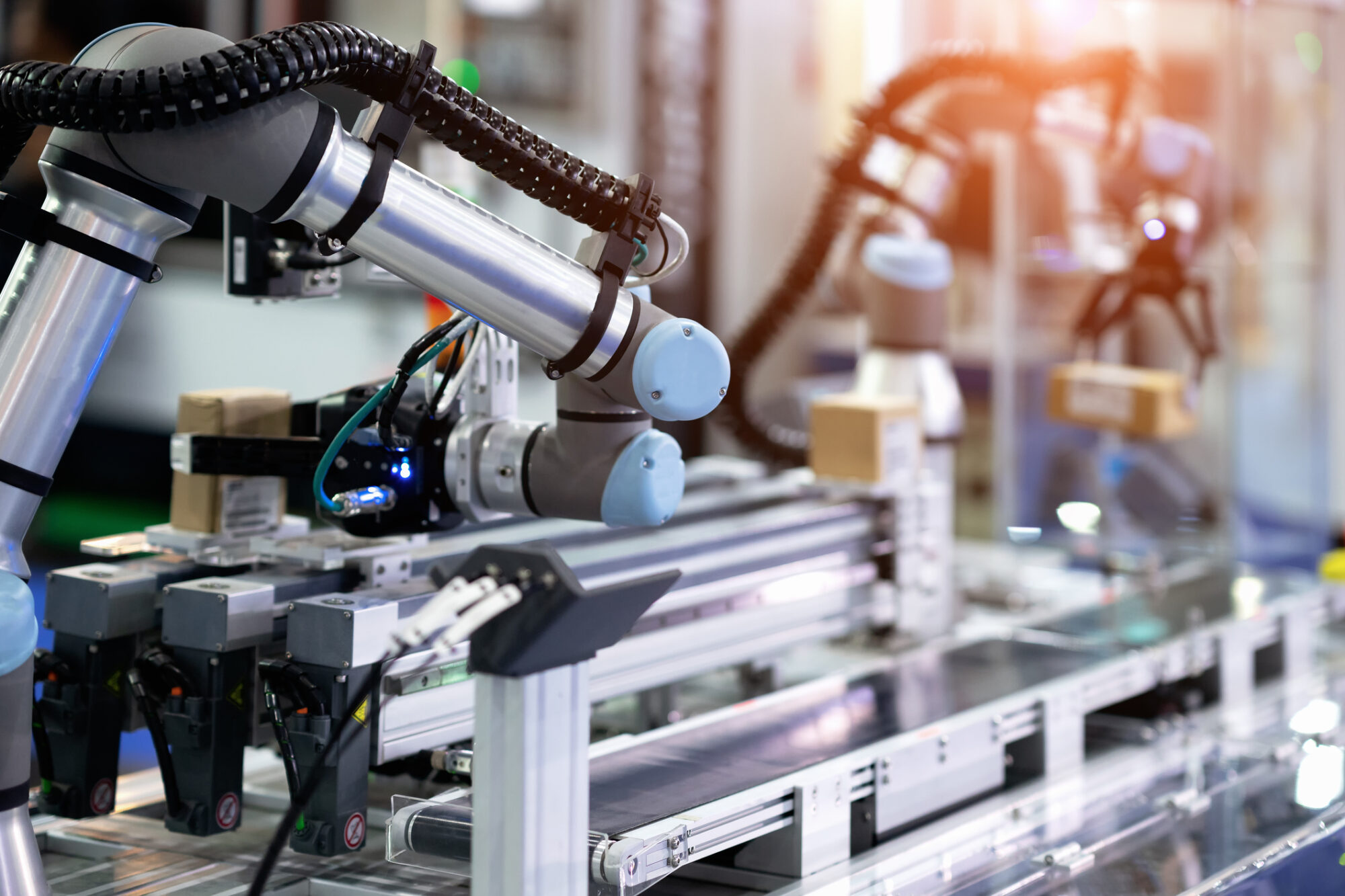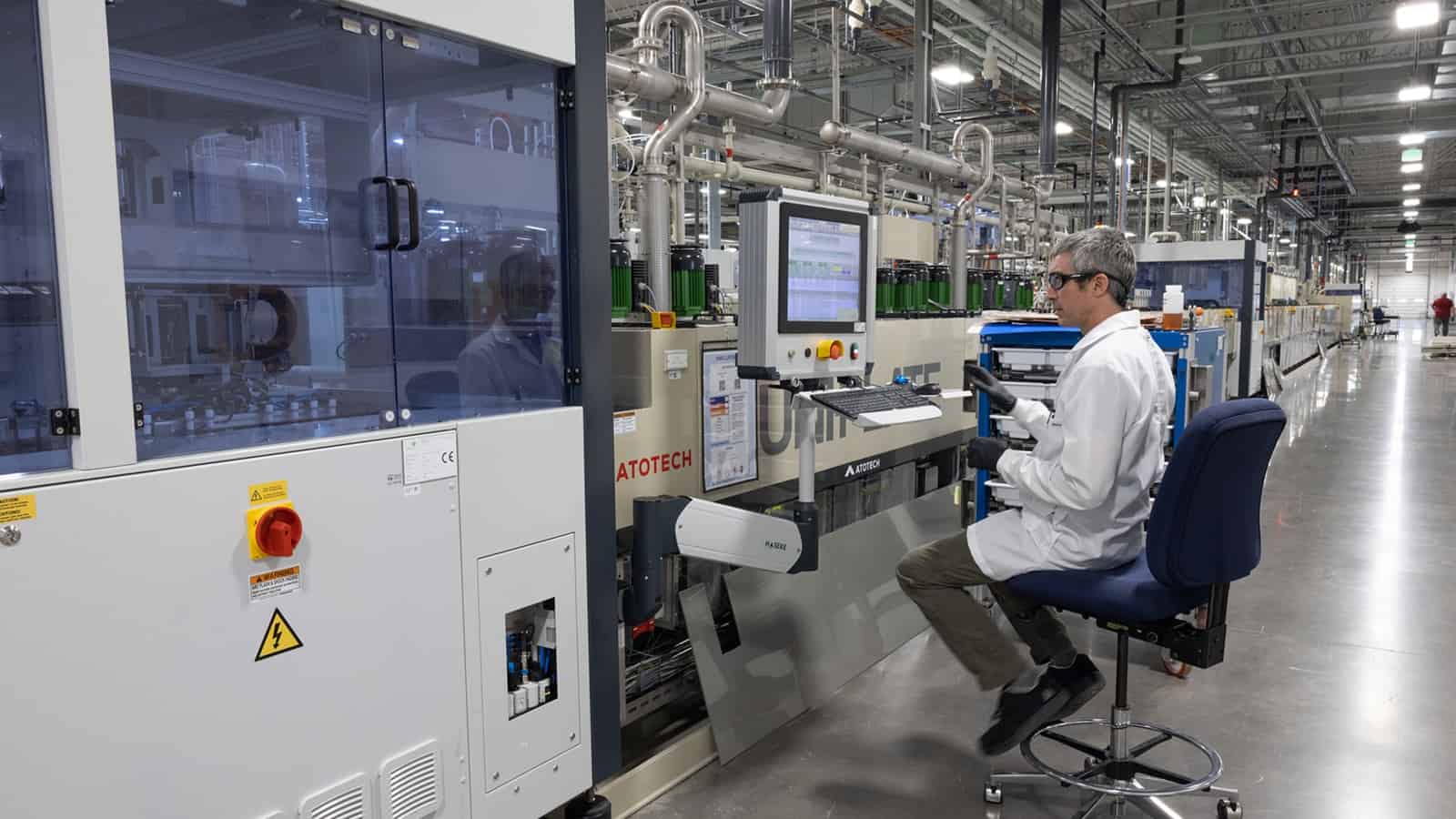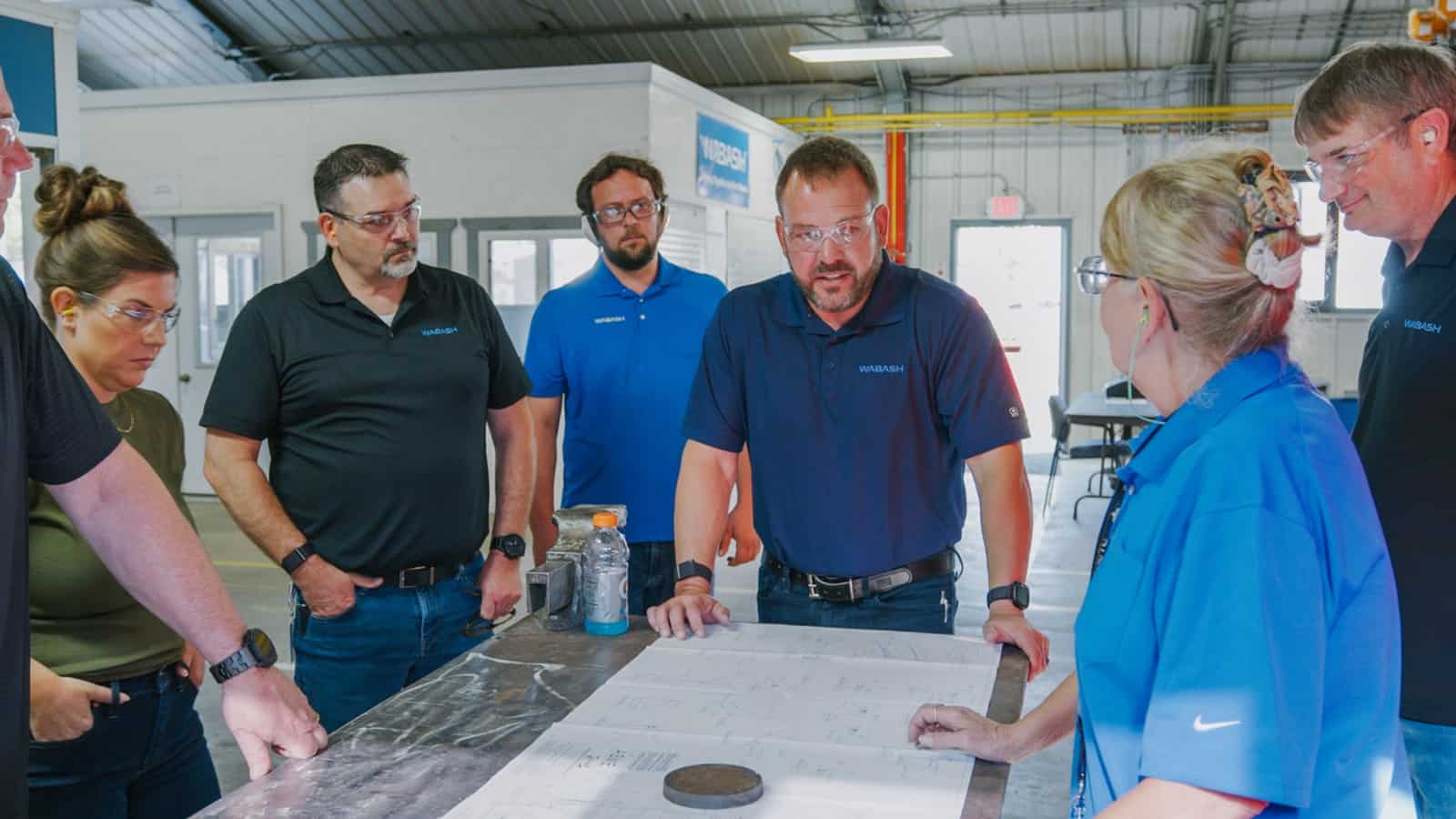How Manufacturing 4.0 Got Its Name—and Why It Matters

Flashback to 2015: “Hamilton” debuted on Broadway, millennials surpassed baby boomers as the largest U.S. generation and the term “Industry 4.0” was gaining traction in manufacturing circles. It was also when the Manufacturing Leadership Council created a conceptual framework called “Manufacturing 4.0.”
So what is the difference between Industry 4.0 and Manufacturing 4.0? While the terms may not sound all that distinct from each other, Manufacturing 4.0 represents the MLC’s commitment to a far-sighted, holistic approach to manufacturing’s tech-enabled metamorphosis—one that has served it well in over the past eight years.
The background: The 4.0 movement started in Germany in 2011 when the German ministries for education, research, economic affairs and energy developed a strategic initiative that would push forward the digital transformation of industrial manufacturing.
- They named this initiative Industrie 4.0. It featured an action plan that combined policy initiatives, public–private funding, strategies for technology implementation and the identification of business drivers and barriers.
The difference: For the MLC and its members, Manufacturing 4.0 is made up of transformations in three different arenas: technology, organization and leadership.
- Contrast this with Industry 4.0, which covers only technology topics—specifically nine pillars of technological innovation, which include autonomous robots, big data, cloud computing, IoT, cybersecurity, systems integration, simulation, AR/VR and additive manufacturing.
- “MLC, of course, covers all of these technologies, but, importantly, adds the dimensions of organizational and leadership change as part of its perspective on manufacturing’s digital transformation,” says David R. Brousell, the MLC’s founder, vice president and executive director.
MLC in action: While the MLC does provide member resources that focus on specific technologies and their uses in manufacturing operations, it also covers topics such as how leaders can prepare their workforce for digital transformation, how organizations should be structured to make business decisions based on manufacturing data and how leaders can ensure they set their teams up for digital success.
- Additionally, the annual Manufacturing Leadership Awards recognize not only high-performing digital manufacturing projects but also outstanding individuals who demonstrate both technological understanding and strong personal leadership.
M4.0’s continued evolution: Today, the MLC continues to use Manufacturing 4.0 as the overarching framework for its member companies’ activities.
- Its influence is apparent in the MLC’s annual Critical Issues Agenda, a member-created list of key business drivers and enablers of digital manufacturing.
- The agenda covers technological advances like smart factories and data analytics, alongside the organizational ecosystems that put such advances into operation—from the leaders who direct them to the cultures that make them succeed.
The Future of M4.0: As the MLC gets ready to set its 2023–2024 Critical Issues Agenda, it will continue to take a holistic approach to the technological changes sweeping the industry by recognizing the importance of people in making those transformations happen.
Go deeper: You can learn more about Manufacturing 4.0 by downloading the MLC’s white paper, Manufacturing in 2030: The Next Phase of Digital Evolution; reading a recent report, The Future of Industrial AI in Manufacturing; or attending its Aug. 30 virtual Executive Interview, Shifting from Disruption to Growth.
A Homegrown Solution: Schweitzer Engineering Laboratories Makes Printed Circuit Boards

With one of its key components—printed circuit boards—in short supply, Schweitzer Engineering Laboratories chose the proactive solution: it would begin making them itself. Now that its new factory is up and running, SEL is receiving unexpectedly keen interest from other companies, and considering ramping up production for outside sales.
Fixing a supply chain problem: The Pullman, Washington–based electric power system protection solution manufacturer began manufacturing PCBs at its new $100 million, 162,000-square-foot factory in Moscow, Idaho, back in March.
- “Printed circuit boards take electronic components and interconnect them so they can interact with each other,” SEL CEO David Whitehead said. “Without them, you can forget about AI, forget about your cell phones—they’re in just about any electronic device.”
- The Moscow factory is running at about 25% capacity. When it reaches full production later this year, it will be one of the top PCB manufacturers in the U.S., according to Whitehead.
Domestic and accessible: The PCB “is a critical component that goes into our devices,” Whitehead continued. “Now, instead of sourcing PCBs from around the U.S., we can produce them ourselves.”
- The Moscow facility—which only produces the circuit boards for SEL—has increased the company’s supply chain resiliency and sped up its output, Whitehead told us. “Now, in a handful of days after designing a printed circuit board for a product, our engineers are in their labs testing it. It’s a big win for us.”
- Nearly half of manufacturers in the U.S.—44.9%—cite supply chain hurdles as one of their top business challenges, according to the NAM’s Q2 2023 Manufacturers’ Outlook Survey.
Self-funded and viable: SEL funded 100% of the facility’s construction costs, and it will have paid for itself in two to three years, Whitehead said.
- “I think that’s really a big deal for not only taxpayers but the local community generally,” he said. State and local governments “can take the funds [they didn’t use on us] and invest” elsewhere.
A good neighbor: The Moscow plant—which features a fume scrubber system that exceeds Environmental Protection Agency standards for volatile organic compounds—also uses a “zero-liquid discharge water treatment system that recycles and reuses all the water used to manufacture the printed circuit boards,” Whitehead said.
- A comparable factory would use about 90,000 gallons of water each day of production, while SEL uses about 500 to 600 gallons—the equivalent of only a few households’ daily usage, according to Whitehead. Most of that is for worker needs (drinking water and restrooms).
- The company also reclaims and reuses metals, such as tin, silver and gold, that are used in the production process.
- “We are very environmentally conscious about how we produce these boards,” Whitehead said.
What’s next? Since the facility began production, SEL has gotten numerous inquiries from other manufacturers interested in buying the PCBs. The company is likely to oblige them soon.
- “This is our next opportunity,” Whitehead said of producing boards for other manufacturers. “We love being vertically integrated, building as much as we can close to where we’re going to use the products. … As we get better at it for our own consumption, I can see us expanding it.”
Small Business Administration Relaxes Lending Rules

The Small Business Administration is streamlining its lending process, according to The Wall Street Journal (subscription).
What’s going on: “The Small Business Administration is simplifying loan requirements, automating more of the process and expanding the pool of nonbank lenders licensed to issue SBA loans. The moves, many of which take effect Aug. 1, will make it easier for financial-technology firms to participate.”
- The goal: to increase credit extended to small businesses that have typically struggled to get it.
The concern: “[T]he changes—and the decision to couple relaxed requirements with new lenders—have drawn criticism from the industry and members of Congress, who say the revisions could jeopardize the program by increasing loan defaults.”
- Some worry that without “firm guardrails from the SBA” lenders will make risky loans, resulting in more defaults.
- Even if defaults don’t increase, loans could get more expensive for borrowers, as lenders will now be able to charge flat fees.
Why it’s important: “The SBA is authorized by Congress to guarantee as much as $34 billion in loans annually through its main lending program” but qualifying for the funds requires adhering to a set of burdensome rules—and that’s led to underutilization of available funds, according to the Journal.
The changes: “Under the new SBA rules, lenders can use their own standard credit policies to make SBA loans of as much as $500,000 instead of following government guidelines. Lenders are encouraged to check a box to indicate why borrowers can’t get credit elsewhere, a crucial program requirement, instead of providing a detailed written explanation.”
- Revisions to the loan requirements include reduced or eliminated downpayments for some borrowers.
How Wabash Made Innovation Its Mission

Innovation isn’t just one of many priorities at transportation systems manufacturer Wabash—it’s at the center of everything. Instead of having a traditional R&D function in the product development department, the company has reorganized its hierarchy so that innovation is considered in every major decision, from hiring to investments and more.
“It’s not possible to have innovation siloed in the engineering world; that wouldn’t allow us to achieve the scale of innovation that customers need,” President and CEO Brent Yeagy said.
As the manufacturing supply chain becomes increasingly intricate in a complex world, Wabash is staying ahead of the game. In a recent interview, Yeagy explained how the company does it.
The big picture: This “full reimagining” of the company occurred in response to broad forces reshaping the manufacturing industry, said Yeagy.
- Within the past decade, e-commerce has totally disrupted the logistics model of the previous 30 years, he pointed out.
- Meanwhile, digital technology has enhanced the speed and precision of the industry, which has also increased the complexity of its logistics needs.
- On top of that, the pandemic altered manufacturers’ thinking about lean inventories, lead times and the domestic supply chain infrastructure, sparking a system-wide transformation that isn’t over yet.
- And that’s all before we get to the possibilities of artificial intelligence, autonomous vehicles, and new sources of clean energy—all of which could bring profound and unpredictable changes to the industry.
The response: Watching these changes unfold, Yeagy and his team knew they had to take dramatic steps to keep up.
- “We restructured the entire organization away from standalone divisions,” prioritizing collaboration instead, Yeagy said. This involved “aggregating R&D and business development,” which had previously been spread out over 11 different departments.
- This shift also reflected a change in the company’s philosophy. Innovation could no longer be incremental, Yeagy determined, but had to be audacious.
The internal system: Such advances are only possible if the company has a flexible, fast-moving core of innovators who are always looking for the next opportunity, Yeagy told us.
- Instead of creating an innovation strategy that “sits on a shelf” for a year or more, Wabash updates its strategy on a weekly or monthly basis.
- While the company’s R&D and corporate development teams have strict objectives, they can also challenge the strategic direction and introduce fresh ideas—such as new technologies that might give the company an edge.
- This system also requires the right people for the job. Team members must have not only the technical qualifications for the work, but also the capacity to trust, collaborate and be vulnerable when sharing ideas, Yeagy said.
The successes: The company’s new structure has led to industry-leading innovations like Wabash’s subscription model, which allows clients to “subscribe” to a certain level of fleet capacity, instead of managing a fleet of trucks themselves.
- Wabash manages the fleet and maintenance, Yeagy explained, guaranteeing a certain capacity every day to its customers, while offering a range of rental models to suit their needs.
- In another victory for its innovative corporate development team, Wabash found a swift solution when it discovered it didn’t have sufficient distribution capabilities for aftermarket parts. It created a joint venture with a competitor company that had ample warehouse space across the country—going from the idea stage to nationwide operations in a mere six months.
Military influence: Yeagy’s service in the Navy shaped his leadership throughout the company’s transformation, he told us.
- “The military is based on a mission orientation,” he explained. “If everyone understands where we are supposed to go and why, it allows them to be agile and overcome obstacles” in the field, where the unpredictable happens.
- “Officers live to complete the mission by taking care of their people, preparing them mentally, physically, operationally,” and then allowing them to operate on their own. “We have to do that too,” he concluded.
A word of advice: Yeagy advises manufacturing leaders that truly experimental teams require “a safe place to fail and learn how to be comfortable with failure.” He admits that “It’s very hard to take a manufacturing company that doesn’t want to fail, and to teach them,” so leaders must strive to be “immensely” empathetic. It’s clear from speaking to Yeagy that this is his top priority.
Second Fusion Reaction Nets More Energy

U.S. scientists have achieved a net energy gain in a nuclear fusion reaction for a second time—this time, with a higher energy yield, according to Axios.
What’s going on: The federal Lawrence Livermore National Laboratory in California announced Sunday that in an experiment on July 30, a fusion reaction produced more energy than it consumed, and more than a similar experiment produced last December.
- The December reaction used 192 lasers to produce a net gain of 1.1 megajoules of fusion energy, enough to power an average-size home for about half an hour, according to Extreme Tech.
- The July reaction is said to have netted even more, though specific figures for it are not yet available.
Why it’s important: “Scientists have worked for decades to develop nuclear fusion as a source of effectively limitless clean energy,” Axios reports.
- However … “Scaling up the technology to support the electrical grid will require increasingly powerful lasers—and more of them,” according to Extreme Tech.
The last word: “The net gain of fusion energy—for a second time, and in a larger amount—is a tremendous milestone,” said NAM Director of Domestic Economic Policy Brandon Farris. “It is further evidence of the enormous potential of nuclear power to help us meet our energy needs and energy-security goals.”
SEC Finalizes Cybersecurity Disclosures Rule

After an aggressive campaign by the NAM, the U.S. Securities and Exchange Commission has scaled back a damaging cybersecurity proposal that would have been deeply problematic for manufacturers. Yet, the final regulations still impose compliance burdens on publicly traded companies. Here’s what manufacturers can expect now that the rule is finalized.
The background: Last year, the SEC proposed a new set of cybersecurity disclosure requirements for public companies. The centerpiece of the rule was a mandate to disclose cybersecurity incidents to the public within four days. The proposal also would have required detailed reporting on companies’ policies and procedures for responding to cybersecurity threats.
The problem: Requiring detailed public disclosures about cybersecurity incidents and processes could provide a roadmap to potential hackers, and sharing information about ongoing incidents could compromise efforts to stop an attack.
The NAM response: The NAM urged the SEC to make commonsense adjustments to protect manufacturers from attacks and give companies the flexibility to respond to cybersecurity incidents appropriately.
The result: The final rule is more tailored than the initial proposal, reducing the risk that companies will be forced to expose sensitive information. But its requirements still impose new compliance burdens on manufacturers.
Incident reports: The rule still requires companies to report cybersecurity incidents publicly within four days, but companies will be able to request that the attorney general grant a 30-day extension to protect public safety or national security—a top priority for the NAM. The extension could be lengthened by an additional 30 days (for public safety) or 90 days (for national security) if warranted.
- Thanks to the NAM’s intervention, the SEC will require the disclosure of only limited information about an attack’s circumstances and impact, whereas the original proposal would have forced companies to disclose extensive details, including potentially sensitive data.
- In addition, a provision requiring companies to track, aggregate and disclose the impact of minor cybersecurity incidents—which the NAM opposed—was struck from the final rule.
Risk management and governance: Companies will be required to disclose information on cybersecurity oversight by their board and management, as well as how cybersecurity is incorporated into their overall risk management strategy.
- These disclosures must include “sufficient detail for a reasonable investor to understand” a company’s cybersecurity risk management—but will no longer include information on a company’s specific prevention and detection activities.
- A provision effectively requiring companies to have a cyber expert on their board, which the NAM strongly opposed, was not included in the final rule.
Our take: “The NAM is committed to a smart, flexible disclosure approach that ensures manufacturers—and their customers and shareholders—can stay protected from cybersecurity threats,” said NAM Senior Director of Tax and Domestic Economic Policy Charles Crain.
- “Manufacturers were glad to see that the SEC made some adjustments to its rule, but more must be done. The SEC and the Department of Justice must grant companies the flexibility to delay incident reporting to prevent threats to public safety and national security.”
Get protected: Every manufacturer should have the tools they need to protect themselves against cyberattacks. Check out NAM Cyber Cover—an exclusive cybersecurity and risk mitigation program for NAM member companies and organizations.
China’s Legacy-Chip Investments Trouble U.S., Europe

The U.S. and Europe are working to address “China’s accelerated push into the production of older-generation semiconductors,” Bloomberg (subscription) reports.
What’s going on: Last year, the U.S. imposed restrictions on the export of certain advanced technologies to China. Beijing has reacted by investing heavily in building facilities making older chips that do not face such U.S. restrictions.
- Legacy chips—those produced using 28-nanometer-and-larger equipment—remain critical in the global economy as components of everything from electric vehicles to military devices.
- China is on track to build 26 semiconductor factories through 2026, while the U.S. is forecast to construct 16 facilities “that use 200-millimeter and 300-mm wafers.”
Why it’s a problem: “Senior EU and U.S. officials are concerned about Beijing’s drive to dominate this market for both economic and security reasons, [sources] said. They worry Chinese companies could dump their legacy chips on global markets in the future, driving foreign rivals out of business…”
- If that were to happen, Western firms could become reliant on China for the chips, the sources say, and that could pose a national security risk.
Importance of legacy chips: The global pandemic demonstrated that older-model semiconductors remain important, as chip shortages hit companies’ bottom lines.
- The U.S. and Europe have been trying to expand their own chip production to avoid a repeat. Efforts have included the 2021 CHIPS and Science Act, which set aside $52 billion to bolster domestic semiconductor manufacturing in the U.S.
A problem to solve: “Commerce Secretary Gina Raimondo alluded to the problem during a panel discussion last week at the American Enterprise Institute. ‘The amount of money that China is pouring into subsidizing what will be an excess capacity of mature chips and legacy chips—that’s a problem that we need to be thinking about and working with our allies to get ahead of,’ she said.”
SEC Finalizes Cybersecurity Disclosures Rule

After an aggressive campaign by the NAM, the U.S. Securities and Exchange Commission has scaled back a damaging cybersecurity proposal that would have been deeply problematic for manufacturers. Yet, the final regulations still impose compliance burdens on publicly traded companies. Here’s what manufacturers can expect now that the rule is finalized.
The background: Last year, the SEC proposed a new set of cybersecurity disclosure requirements for public companies.
- The centerpiece of the rule was a mandate to disclose cybersecurity incidents to the public within four days.
- The proposal also would have required detailed reporting on companies’ policies and procedures for responding to cybersecurity threats.
The problem: Requiring detailed public disclosures about cybersecurity incidents and processes could provide a roadmap to potential hackers, and sharing information about ongoing incidents could compromise efforts to stop an attack.
The NAM response: The NAM urged the SEC to make commonsense adjustments to protect manufacturers from attacks and give companies the flexibility to respond to cybersecurity incidents appropriately.
The result: The final rule is more tailored than the initial proposal, reducing the risk that companies will be forced to expose sensitive information. But its requirements still constitute new compliance burdens on manufacturers.
For the details of the final rule, read the full story.
Every manufacturer should have the tools they need to be protected against cyberattacks. Check out NAM Cyber Cover—an exclusive cybersecurity and risk mitigation program for NAM member companies and organizations.
Finding Solutions for a Sustainable Manufacturing Future

With increased pressure from customers, regulators and even shareholders, sustainable business practices are no longer optional for manufacturers. From reduced energy and materials consumption to lower emissions and ethical sourcing, manufacturers are expected to meet ambitious new goals. Luckily, the Manufacturing Leadership Council has established a new member working group devoted to helping manufacturers reach these objectives.
Support set-up: With five virtual meetings each year, the M4.0 Sustainability and Net Zero Decision Compass Group will explore key issues, best practices and challenges related to creating sustainable, compliant and environmentally friendly operating strategies.
- At the first meeting, “Next Steps in Manufacturing 4.0 Sustainability,” on March 10, attendees heard from 3M Senior Vice President of Environmental Strategies and Fluorochemical Stewardship Dr. Rebecca Teeters and Lexmark International Chief Sustainability Officer John Gagel. Both speakers are also MLC board members.
Why the new group: The MLC decided to create the group after a survey of their more than 3,300 members revealed sustainability was a top member business concern.
- “We decided that given the intensity of interest in sustainability and related subjects, such as net zero and the circular economy, this was an opportunity to dedicate a whole new group to the topic,” said MLC Co-Founder, Executive Director and Vice President David Brousell.
Good for business, too: While manufacturers have been discussing and working toward sustainability for decades, recent growing concerns about climate change and other environmental issues are making the matter increasingly urgent.
- Manufacturers that take on sustainable business practices are seeing competitive advantages ranging from cost savings to higher product quality to increased shareholder and employee satisfaction.
Lessons from manufacturing peers: The new Decision Compass group will share sustainability strategies, the real-world achievements of manufacturing companies, knowledge about the use and application of advanced technologies and timelines for implementation.
- Participants will also be able to see how they stack up against other manufacturing companies.
Get involved: The MLC offers resources to help manufacturers improve their operations and learn about digital manufacturing. To learn more about the sustainability group or find out about MLC membership, email [email protected].
Wyoming Seeks to Establish a “Nuclear Industry” and Advanced Manufacturing

Wyoming is partnering with Battelle Energy Alliance to “‘collaborate in the research, development, demonstration and deployment of advanced energy technologies and approaches,’” including nuclear power, according to The Casper Star-Tribune (subscription).
What’s happening: Wyoming Gov. Mark Gordon intends for the state to “establish a nuclear industry and a sophisticated and advanced manufacturing capacity using Wyoming uranium, Wyoming technology and Wyoming workers,” according to a statement.
- Wyoming is the chosen home for the planned Natrium project, an advanced nuclear reactor to be developed by TerraPower.
- Battelle operates the Idaho National Laboratory.
Memorandum of understanding: A five-year memorandum of understanding between the Wyoming Energy Authority and the Idaho National Laboratory “specifies 14 shared areas of interest,” many of which are related to nuclear and hydrogen power.
Common goal: “According to the memorandum, the shared target is to ‘collaboratively develop a path to global leadership in a carbon-constrained economy ’ and place the state ‘at the forefront’ of the advanced energy sector.”